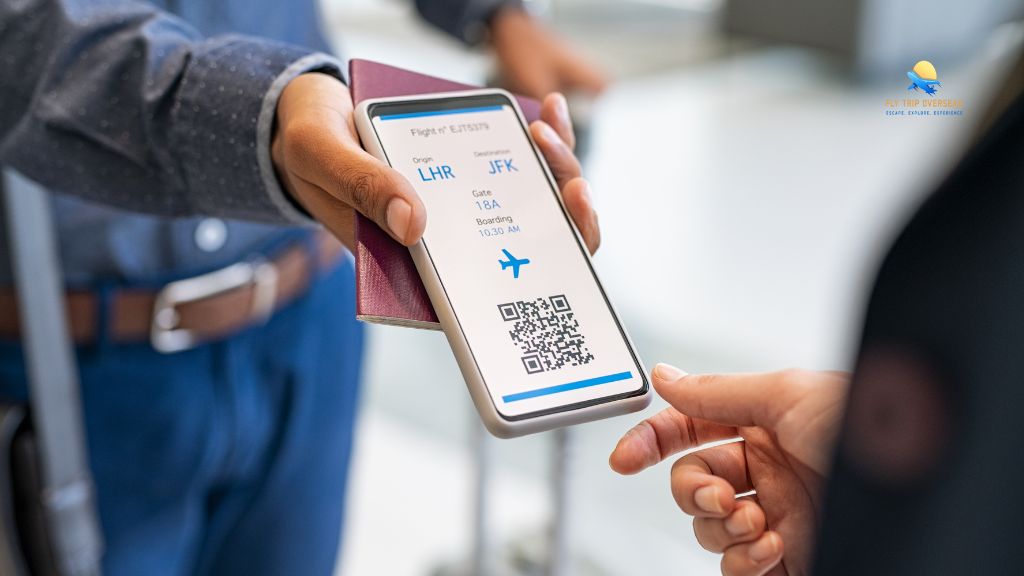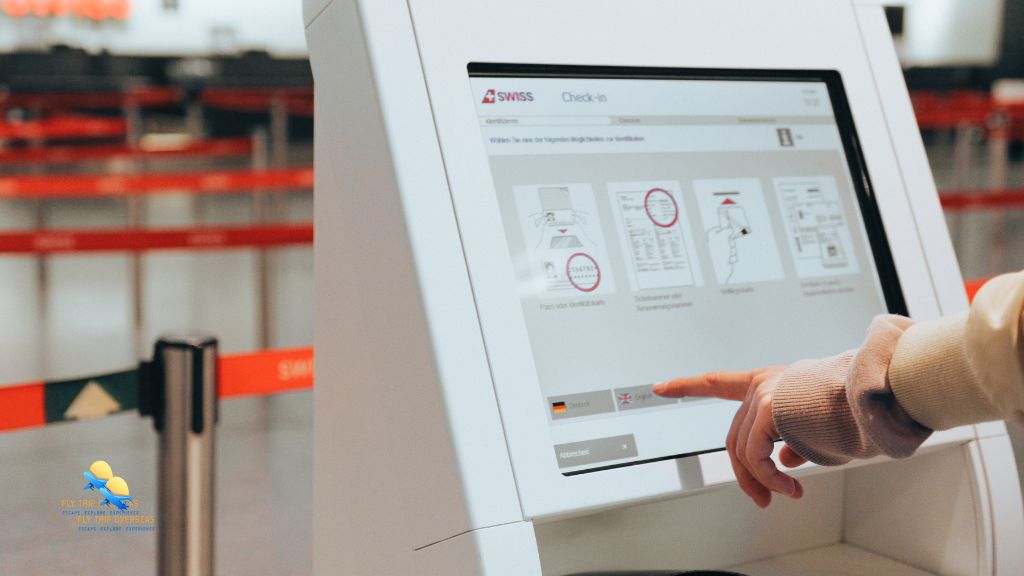E-tickets serve as digital proof of a travel booking, replacing traditional paper tickets with a more convenient format
In today’s digital era, air travel is more convenient than ever, thanks to the widespread use of e-tickets. Whether you are a first-time traveller or a frequent flyer, knowing how to read your e-ticket is crucial for a smooth journey. In this article by FTO Travels, a leading travel agency in Dhaka, Bangladesh, we will walk you through every aspect of reading and understanding your e-ticket.
What is an E-Ticket?
An e-ticket or electronic ticket is a digital version of a paper airline ticket. It contains all the travel information a passenger needs and is stored in the airline’s database. Instead of carrying a physical ticket, travellers can now present an e-ticket on their phone or a printout.
Key Benefits of an E-Tickets:
- Convenience: Easily accessible on your phone, tablet, or computer.
- Security: No physical ticket to lose, steal, or damage.
- Efficiency: Simplifies check-in processes (online, self-service kiosks).
- Eco-friendly: Reduces paper waste.
- Global Standard: Universally accepted by airlines worldwide.
Knowing what an e-ticket is is the first step towards understanding its contents and preparing for your flight.

What Details Are Needed to Book a Flight and Receive an E-Ticket?
Understanding what details are needed to book a flight is crucial to ensure your e-tickets is issued correctly from the start. When you book with FTO Travels or any airline, you’ll typically need to provide:
- Full Name (as per Passport/NID): This is paramount. Ensure it matches exactly.
- Date of Birth: For passenger identification.
- Gender: For passenger identification.
- Nationality: For immigration and airline records.
- Passport Number (for international travel): Along with issue and expiry dates.
- National ID Card Number (for domestic travel in Bangladesh): Occasionally required in place of a passport for local flights.
- Contact Information: Phone number (local and international if applicable) and email address for confirmations and updates.
- Payment Information: Credit/debit card details or other payment methods.
- Travel Dates and Destinations: Your preferred departure and arrival cities and dates.
- Special Requests (Optional): Seat preferences, special meals, assistance for disabilities, unaccompanied minors, etc.
Providing accurate information upfront is the best way to avoid issues when you later read your ticket and prepare for travel. FTO Travels’ expert agents are always here to assist with these details.
Sections of an E-Ticket: Understanding Each Part
Let’s break down the standard sections of a typical ticket to help you understand each detail. Being familiar with each section can help you check for errors, manage your itinerary, and avoid travel disruptions.
- Passenger Information
This section displays the full Name of the traveller. It must exactly match the Name on your passport or government-issued ID to avoid check-in issues. Some airlines may deny boarding if there’s a mismatch.
- Ticket Number
A unique 13-digit number is assigned to your booking. This serves as a receipt and reference for your purchase. You’ll often need this number when making changes to your flight, checking in, or verifying your booking with the airline.
- Flight Details
Provides comprehensive information about your scheduled flight(s):
- Airline name: The airline operating your flight.
- Flight number: Helps identify your specific flight.
- Departure and arrival airports: Includes city and airport codes (e.g., DAC for Dhaka).
- Departure and arrival times: Make sure to double-check time zones.
- Terminal and gate (if available): Useful for navigation within the airport.
- Booking Reference (PNR)
The Passenger Name Record (PNR) is a six-character alphanumeric code that allows quick access to your booking details. You can use it to manage your booking, select seats, or check flight status online.
- Baggage Allowance
This section outlines the amount of luggage you are permitted to bring. It specifies both carry-on baggage (usually up to 7 kg) and checked baggage (often 20 kg to 30 kg, depending on the airline and fare type). Consistently review this to avoid excess baggage fees.
- Fares and Taxes
A detailed cost breakdown showing the base fare, applicable taxes, surcharges, and any convenience or service fees. It helps you understand what you’re paying for and why your ticket costs what it does.
- Travel Class
Indicates your ticketed travel class: Economy, Premium Economy, Business, or First Class. This section can also display subclass codes (such as Y, B, and J), which may impact your baggage allowance, refundability, or upgrade eligibility.
- Terms and Conditions
Lists essential policies, including cancellation and refund rules, rebooking charges, no-show penalties, and other airline-specific guidelines. It’s necessary to read this to understand your rights and limitations as a passenger.

How to Use Your E-Ticket at the Airport
Navigating the airport with your e-ticket is straightforward and stress-free when you follow these steps:
Step-by-Step Guide:
- Show your e-ticket (either digital or printed) at the airline’s check-in counter or use a self-service kiosk.
- Present a valid government-issued photo ID or your passport (for international travel).
- Obtain your boarding pass, which will allow you to proceed to your flight.
- Head to the security checkpoint and then to your boarding gate.
Pro Tip: Always save a copy of your e-ticket both digitally and in print. This ensures access in case of device failure or battery issues.
Common Mistakes to Avoid When Reading Your E-Ticket
Misunderstanding or overlooking details on your ticket can cause unnecessary delays or denied boarding. Be aware of these frequent mistakes:
- Mismatched names: The passenger name must match exactly with the name on your ID or passport to avoid being denied at check-in.
- Incorrect travel dates: Double-check the dates, especially when travelling across time zones or booking months in advance.
- Time zone confusion: Confirm both local departure time and arrival time in respective time zones.
- Incorrect airport codes: Each city may have multiple airports. For example, DAC stands for Hazrat Shahjalal International Airport in Dhaka—ensure you head to the right one.
Tips for a Hassle-Free Journey with Your E-Ticket
Now that you know how to read your e-ticket, here are some practical tips to ensure a smooth travel experience:
- Review Immediately: As soon as you receive your ticket, thoroughly check all details (Name, dates, times, airports, baggage). If anything is incorrect, contact FTO Travels or the airline immediately.
- Save Electronically: Keep a copy of your ticket confirmation in your email, a cloud storage service, or a travel app for future reference.
- Print a Copy (Optional but Recommended): While not always required, having a printed copy can be a lifesaver if your phone battery dies or you encounter technical issues at the airport.
- Know Your PNR: Memorise or easily access your PNR number. It’s your quick reference for everything.
- Check-in Online: Most airlines allow online check-in 24-48 hours before departure using your PNR and last name. This saves time at the airport.
- Verify Baggage Limits: Re-check your ticket’s baggage allowance, especially if you have multiple flights or different airlines.
- Arrive Early: Always arrive at the airport well in advance of your flight, especially for international travel from Dhaka, to allow sufficient time for security, check-in, and immigration procedures.

Frequently Asked Questions (FAQs) About E-Tickets
- What is an e-ticket?
An e-ticket (electronic ticket) is a digital record of your airline reservation stored in the airline’s computer system. The email or document you receive is simply a confirmation or receipt of this digital record containing all your flight and personal details.
- Is an e-ticket enough for travel, or do I need a physical ticket?
Yes, a ticket is generally all you need. You don’t require a physical paper ticket. You’ll typically use your PNR (booking reference) and ID (passport or national ID) to check in, either online, at a self-service kiosk, or the airline counter.
- What is the PNR on an e-ticket?
The PNR (Passenger Name Record), also known as the booking reference or confirmation number, is a unique five- or six-character alphanumeric code on your ticket. It’s your primary reference for managing your booking, checking in, and communicating with the airline or travel agency.
- Why is it important to check my name on the e-ticket?
It’s critically important to ensure that the name on the e-ticket exactly matches the name on your passport or national ID (the document you’ll use for travel). Even minor spelling discrepancies can lead to denial of boarding.
- What details are needed to book a flight correctly?
Key information required to book a flight includes your full name (as per your ID), date of birth, gender, nationality, passport or NID number, contact information (phone number and email), desired travel dates and destinations, and payment details.
- How do I know my baggage allowance from my e-ticket?
Your e-ticket will have a dedicated section for “Baggage Allowance,” “Checked Baggage,” or “Bags.” This will specify the maximum weight (e.g., 20 kg, 23 kg) or the number of pieces allowed for both checked and carry-on luggage. Always check this carefully.
- Can I make changes to my flight after receiving my e-ticket?
It depends on the fare rules of your specific e-ticket. The “Fare Rules” or “Conditions” section on your ticket outlines whether changes are permitted, the applicable fees, and whether the fare is refundable. Contact your travel agency (like FTO Travels) or the airline for assistance.
- What if I’m unable to print my e-ticket?
While a printed copy is recommended for backup, it’s generally not required. You can often check in using just your PNR and identification. Many airlines also offer mobile apps that allow you to access your e-ticket and obtain a digital boarding pass.
- What should I do if there’s a mistake on my e-ticket?
Contact the airline or your travel agency (FTO Travels) immediately if you find any mistakes on your e-ticket, especially with your Name or dates. Rectifying errors early is crucial and can save you significant trouble and costs later.
- How far in advance should I arrive at the airport with my e-ticket?
For domestic flights, aim for 1.5 to 2 hours before departure. For international flights from Dhaka, it’s advisable to arrive 3 to 4 hours before departure. This allows ample time for check-in, security, immigration, and any unforeseen delays.
Conclusion: Your E-Ticket, Your Gateway to Global Adventures
Your e-ticket is much more than just a piece of paper or an email; it’s your essential travel document, confirming your booking and providing all the necessary information for your journey. By understanding what an e-ticket is and mastering how to read your e-ticket effectively, you empower yourself to travel with confidence and ease.
At FTO Travels in Dhaka, Bangladesh, we are dedicated to ensuring that every aspect of your travel experience is seamless. From helping you understand the necessary details to book a flight to clarifying every aspect of your e-ticket, our team is here to support you. Don’t let travel details be a source of stress; let us guide you to a smooth and enjoyable trip every time.
Planning a trip soon? Let FTO Travels handle your booking and ensure you receive your e-ticket without hassle. Contact us today for expert travel solutions and unbeatable deals!
